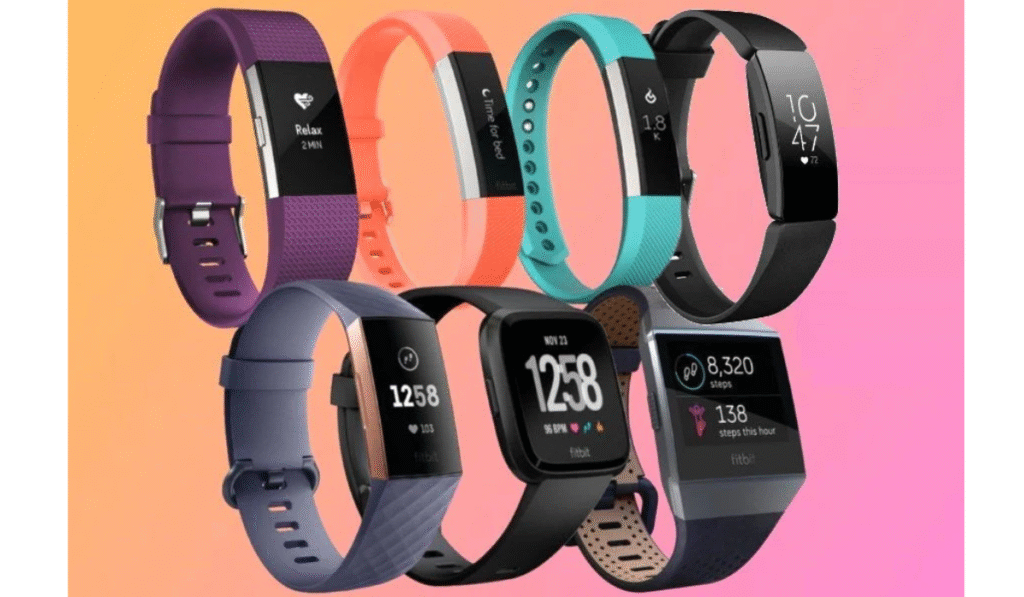In the world of wearable technology, Fitbit has established itself as a pioneer, offering a range of devices that cater to diverse health, fitness, and lifestyle needs. For women, in particular, choosing a smartwatch or fitness tracker involves considering a unique blend of factors: health tracking capabilities, design aesthetics, comfort, and everyday functionality. The term “Fitbit watches for women” isn’t about a separate product line, but rather about understanding which models and features align best with women’s health goals and personal style.
This article provides an informational overview of Fitbit’s offerings, highlighting the key considerations for female users to help them make an informed decision based on their individual needs.
Beyond Steps: The Core Features That Matter
Modern Fitbit devices are far more than simple step-counters. They are comprehensive health hubs worn on the wrist. When evaluating which model might be right for you, consider these core functionalities:
- Activity Tracking: This is Fitbit’s foundation. All devices track steps, distance traveled, calories burned, and active minutes. Many also offer automatic exercise recognition for activities like running, swimming, and biking, providing detailed post-workout summaries.
- Heart Rate Monitoring: Continuous heart rate tracking is a standard feature on most models. This allows for more accurate calorie burn calculations, provides insights into overall cardiovascular health, and can power features like the Daily Readiness Score (on premium models), which suggests whether you’re recovered enough for a strenuous workout or should focus on recovery.
- Sleep Tracking: Fitbit is renowned for its detailed sleep analysis. Devices track sleep stages (Light, Deep, REM), provide a Sleep Score, and offer insights into sleep quality. This can be particularly valuable for women, as sleep patterns can be affected by hormonal cycles.
- Women’s Health Tracking: This is a standout feature for many female users. Integrated directly into the Fitbit app, it allows you to log menstrual cycles, track symptoms, and predict ovulation and fertile windows. This data can help identify patterns and provide a more holistic view of health throughout the month. Some newer models even feature a Skin Temperature Sensor that can offer further insights into cyclical patterns.
- Smartphone Notifications & GPS: Most watches display call, text, and app notifications, allowing you to stay connected without constantly checking your phone. Built-in GPS (on specific models) is crucial for runners and hikers who want to map their routes and see pace and distance in real-time without carrying their phone.
- Stress Management Tools: Features like the Stress Management Score (which uses heart rate variability, sleep, and activity data) and on-wrist guided breathing sessions (EDA Scan on the Sense models) can be valuable tools for managing daily stress.
Navigating the Fitbit Lineup: Which Model is Right for You?

Fitbit’s range includes everything from slim fitness bands to full-featured smartwatches. Here’s a breakdown of how different series might appeal to different needs and preferences:
1. The Fitness-Focused: Fitbit Inspire Series
- Best For: Those who want essential health tracking in a minimalist, lightweight, and discreet design. It’s an excellent entry-level device.
- Considerations: The Inspire series is a tracker, not a watch. It has a small, rectangular screen and focuses on core metrics like steps, sleep, and heart rate. It’s ideal for women who prioritize comfort and simplicity over a large display or advanced smart features.
2. The Classic All-Rounder: Fitbit Charge Series
- Best For: The fitness enthusiast who wants robust features in a streamlined band form factor.
- Considerations: The Charge series has long been Fitbit’s flagship tracker. It packs most of the advanced health features (like ECG and EDA for stress on the Charge 6) into a sleek, band-style device with a larger color touchscreen than the Inspire. It’s a powerful tool for those who want deep data without the bulk of a full smartwatch.
3. The Versatile Smartwatch: Fitbit Versa Series
- Best For: Those seeking a balance of comprehensive health features and smartwatch functionality in a stylish, square-faced design.
- Considerations: The Versa looks and feels more like a traditional smartwatch. It offers a larger, always-on display option, on-screen workouts, the ability to store and play music offline (on certain models), and a wider selection of clock faces and bands. Its design is often considered the most fashion-forward and customizable, making it easy to dress up or down.
4. The Advanced Health Powerhouse: Fitbit Sense Series
- Best For: The health-conscious user who wants the most advanced sensors and insights available from Fitbit.
- Considerations: As the premium offering, the Sense includes all the features of other models and adds medical-grade sensors for an ECG app (to assess heart rhythm for signs of atrial fibrillation) and an EDA (electrodermal activity) sensor for more detailed stress management. The Fitbit watch for women is the ultimate device for anyone wanting to dive deep into their health metrics.
Design and Comfort: Aesthetic Considerations
For many women, how a device looks and feels is as important as what it does.
- Band Options: Most Fitbit watches come with a standard silicone band, but a wide array of third-party bands are available. Options include leather, metal mesh, woven fabric, and elastomer, allowing for complete personalization to match any outfit or occasion.
- Size and Weight: Fitbit devices are generally lightweight and designed for 24/7 wear, including during sleep. The smaller case sizes of models like the Inspire and Charge are often preferred for a less obtrusive feel.
- Display: Bright, always-on displays are available on higher-end models, making it easy to glance at the time or your stats. The Versa’s square face offers more screen real estate for interacting with notifications.
Informational FAQs
Q1: Are there Fitbit models designed exclusively for women?
A: No, Fitbit devices are unisex in their core design and functionality. However, many features, like the Women’s Health Tracking in the app and the availability of a wide range of stylish, smaller bands and accessories, make certain models particularly appealing and suitable for women.
Q2: How accurate is the Women’s Health Tracking feature?
A: The feature is designed to help you log and predict your menstrual cycle based on the data you input. Its predictive accuracy improves over time as it learns your personal patterns. It is a helpful tool for awareness but should not be used as a sole method for contraception or diagnosing medical conditions.
Q3: Can I wear my Fitbit in the shower or while swimming?
A: Most current Fitbit models are water-resistant to at least 50 meters. This means they are safe for showering, swimming in a pool, and snorkeling. However, they are not designed for high-speed water sports or deep-sea diving. Always check the specific water resistance rating for your model.
Q4: What is the difference between a Fitbit and an Apple Watch?
A: Fitbits generally focus more on health and fitness tracking with longer battery life (often 5+ days). They work with both Android and iOS phones. Apple Watches are full-featured smartwatches with deeper integration into the Apple ecosystem (like calls and messages), a more powerful OS for apps, but shorter battery life (typically less than a day) and are only for iPhone users.
Q5: Do I need a Fitbit Premium subscription?
A: No. A free Fitbit account gives you access to all core functionality, including basic health stats and the Women’s Health Tracking feature. Fitbit Premium is a paid subscription that offers deeper analysis, personalized guidance, wellness reports, and a library of workouts and mindfulness content. It enhances the experience but is not required to use the device.
Conclusion: Choosing Your Partner in Health
The “best” Fitbit for a woman is highly personal. It depends on whether her primary goal is foundational fitness tracking, detailed health analysis, stress management, or a blend of all three with a stylish design.
By prioritizing the features that matter most—be it the dedicated Women’s Health Tracking, the advanced sensors of the Sense, the sleek form of the Charge, or the smartwatch versatility of the Versa—you can select a device that seamlessly integrates into your life. A Fitbit is more than a watch; it’s a tool for gaining awareness, setting goals, and making informed decisions on your journey to overall well-being.

